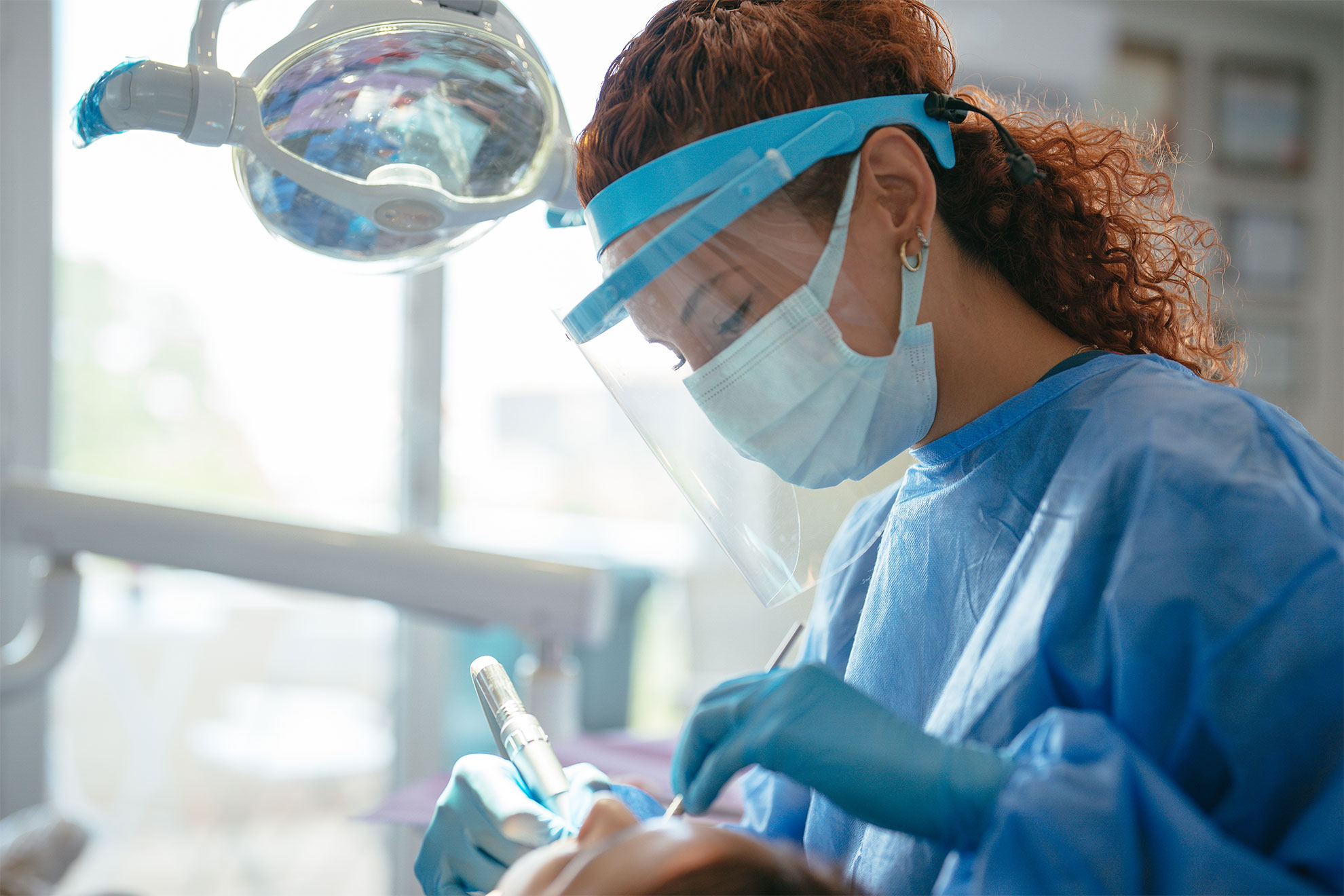Imagine having to travel for hours for a routine dental cleaning or wait days to get treatment for a toothache. For nearly 1.7 million people in the U.S., this is a reality.
A new study published in JAMA Network Open takes a look at the issue of access to dental care, using a more nuanced approach to identify areas with limited dental services across the U.S.
Led by Hawazin Elani, assistant professor in oral health policy and epidemiology at Harvard School of Dental Medicine, the study is one of the first to map spatial accessibility to dental clinics nationally at a granular level. By analyzing data at the block group level — the smallest geographical unit used by the U.S. Census Bureau defined by clusters of blocks — the researchers provide a more detailed picture of dental care access, revealing significant disparities within specific geographic areas of the country.
“These areas are really ‘dental deserts’ where you’d have to go to great distances to find a dentist. Our findings highlight a concerning geographic maldistribution of dentists, with many rural and disadvantaged communities left without access to care,” Elani said.

The study’s approach builds on existing efforts to understand dental care access, including the Health Resources and Services Administration’s designation of Health Professional Shortage Areas for dental services, but takes it a step further by using an advanced gravity-based method to assess the availability of clinicians, accessibility, and adjustments for demand and supply factors at the block group level.
“We were able to identify areas with limited access to dental care that may have been missed by previous studies,” said Md. Shahinoor Rahman, co-author of the study.
This disparity is evident in the ratio of dentists to population, with rural areas having one dentist available for every 3,850 people, compared with urban areas, which have more than 2½ times more dentists, with one dentist for every 1,470 people.
By state, Alaska had the highest percentage of the population (10.4 percent) living in dental deserts, followed by Montana (7.8 percent) and North Dakota (7.7 percent). Only four states — Connecticut, Delaware, Indiana, and New Jersey — along with Washington, D.C., were identified as having no dental deserts.
Elani and her co-authors also examined socioeconomic data to contrast racial and ethnic composition, population by age group, poverty level, educational attainment, median household income, and health insurance. The results showed that nearly 24.7 million individuals lived in dental care shortage areas. In these counties, nearly 15.6 percent of the population lived below the federal poverty level. Racially, more white populations lived in rural areas with a shortage of dentists, as compared with Hispanic and Black populations. However, in urban areas with segregation and a concentration of poverty, Hispanic and Black individuals were likelier to live in areas with a shortage of dental care. A high proportion of individuals in rural shortage areas were also uninsured, and more likely to experience spatial disparities in access to dental care.
Elani noted that this has serious implications for oral and overall health, saying, “The situation is likely even more dire for Medicaid and Medicare beneficiaries, who face additional barriers due to low dentist participation, worsening existing disparities. This can lead to people putting off much-needed care due to access challenges.”
“With this more precise data, we hope our findings can inform dental workforce planning efforts and targeted interventions at the federal and state levels to encourage dentists to practice in underserved areas and reduce disparities in access to dental care,” Elani said.
This work was supported by the National Institute on Minority Health and Health Disparities of the National Institutes of Health under Award No. R01MD017093.
Source link

